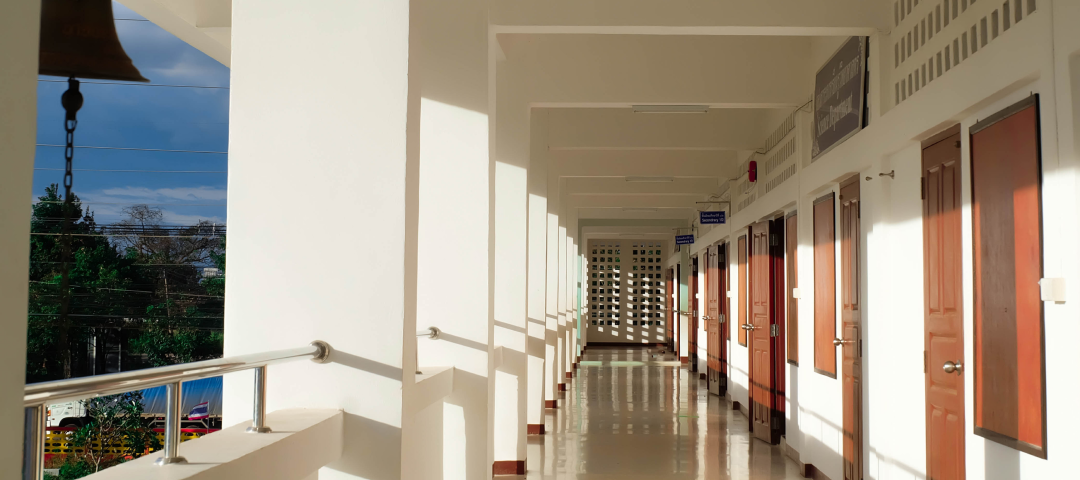
The Indian Education System is one of the largest in the world with more than 1.5 million schools (as listed in 2023 PGI). India has a unique education system designed to uphold its nation’s culture, history, values, and customs. Understanding India’s growing demand for primary, secondary and higher education systems, the latest policies aim to create a more inclusive education system. By 2030, it’s estimated that India’s higher education system will have more than 20 universities among the global top 200 universities. It’s also thought that India will be among the top five countries in the world regarding research & development via schools and colleges.
With education at the centre of the growth and development of a country with the youngest population, poised to become the next superpower, the construction and maintenance of these legacy institutions, namely schools & colleges becomes imperative. They are the cornerstone of our country’s progress.
School Facades & Their Importance
What is the first image of your school that springs up in your mind today? Surely, it’s the way it looked from the outside. An image. A memory. Maybe even a colour!
Building facades are by definition the ‘outer layer’ or the frontage of a structure or a building. They play an important role, not only to the building itself but its surroundings, its occupants, and even the environment as a whole. The word facade in French means face or frontage, which explains why in architectural terms, we use this word to describe the exterior elements of a building. This includes everything from walls to glazing and cladding. It is essentially an overcoat that is attached to the outside of a property to protect it. While windows form geometric punctures into the wall, they do have colour on them. The largest surface area of a building façade is most definitely, the exterior walls. Hence, the largest influential element for a building façade is the colour application on it.
A BUILDING'S DOOR HANDLE IS ITS FIRST SHAKE.…AND THE FAÇADE IS ITS FIRST IMPRESSION!
School Facades & Paints
The three commonly used paint types for institutional structures, like schools and colleges are: lead-based, oil-based, and latex. However, the health hazard posed by lead paints to both adults and children is the reason why the use of lead-based paint is strongly discouraged.
That leaves us with oil and latex paints. Let us understand the differences and benefits offered by both.
Oil-based Paints
These are best used for external walls, windowsills, door trims, other high-traffic zones and areas exposed to climate and seasonal changes. Oil-based paints are expected to be the most durable among paint coatings. They take longer to dry for which paint thinners can be used. They are known to withstand daily wear and tear.
Latex paints
On the other hand, Latex Paints are considered the safest as these emit the lowest amount of volatile organic compounds. They also have the least impact on air quality indoors. Although, these can’t be used over existing layers of dried oil paint. The surface needs to be cleaned thoroughly before application of a fresh coat.
BEFORE APPLYING ANY EXTERIOR PAINT, ENSURE THE EXTERIOR WALLS ARE PROPERLY CLEANED, REPAIRED, AND PRIMED. THIS PREPARATION PROVIDES OPTIMAL ADHESION OF THE PAINT, ENHANCING THE DURABILITY OF THE OUTSIDE WALL PAINT.

School Paints & Durability
Exterior paint is crucial because it not only enhances the appearance of the institutions but also protects the walls from external climate conditions.
Reasons why this exterior paint should be durable:
1. It is exposed to extreme weather conditions & seasonal changes.
2. It also needs to act as a protective shield for school interiors.
3. Exterior surfaces must withstand dust, dirt, rain, wear and tear.
4. Its appearance directly reflects school's stature & safety.

